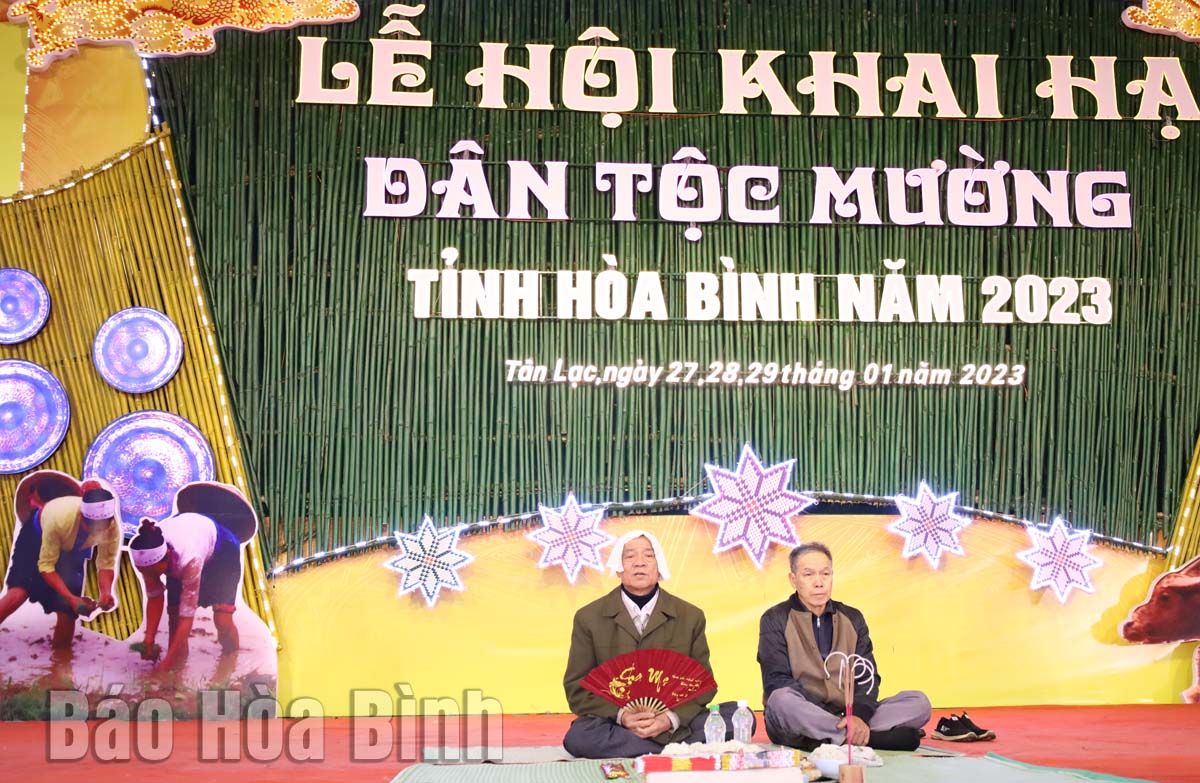
(HBO) – Apart from coordinating with other localities in compiling a dossier on ‘Mo Muong’ to seek UNESCO recognition as a cultural heritage in need of urgent safeguarding, Hoa Binh province has been focusing on promoting, collecting, documenting and preserving the unique values of Mo Muong cultural heritage.
Mo Muong is a job and also a performance practiced at funerals, religious festivals, and life cycle rituals by the Muong ethnic group. The art consists of Mo prayers and performances, by Mo practitioners, or Mo artisans. Through generations, Mo prayers have been passed down verbally in the community. When they are collected, translated, and published in books, however, they begin to exist separately from people.
These days, most Mo prayers are called Mo Muong. They are a collection of verses recited at traditional Muong funerals. Each Muong community has its own version of Mo, but they are all fairly similar. The existence of various versions of Mo has helped expand the heritage and spiritual life of the Muong people.
Mo Muong has a long life, spanning centuries, as it has always helped to nurture the characteristics and the souls of the Muong people. It is the essence of labour, production, cultural behaviour and the philosophy of the Muong people, reflecting their love of life and home villages.
Mo Muong has been practiced in the northern mountainous provinces of Hoa Binh, Son La, Phu Tho, and Ninh Binh, the north central province of Thanh Hoa, the Central Highlands province of Dak Lak and Hanoi.
Mo Muong artisan Bui Van Lung performs the ritual during the Khai Ha (Summer Opening) Festival of the Muong ethnic minority group in Hoa Binh in 2023.
According to Vice Director of the provincial Department of Culture, Sports and Tourism Luu Huy Linh, the locality has mobilised great resources for preserving and upholding the values of the Mo Muong cultural heritage.
The locality has cooperated with provinces and cities where the heritage is practiced to collect and study the relevant values as a basis for the compilation, he stated.
News, articles and reports on valuable rituals and practices related to the Mo Muong cultural heritage have been produced, contributing to widely popularising and promoting the heritage in the community.
The practice has been introduced in cultural, sports and tourism events in the locality and nationwide.
Communication campaigns have been also launched to raise public awareness of the values, role, and significance of the heritage, Linh said.
More and more Mo Muong clubs have been established in Lac Son, Tan Lac, Cao Phong, Kim Boi and Yen Thuy districts, attracting about 200 artisans and locals. The clubs have contributed to preserving, developing, and popularising the heritage.
The locality has also paid attention to honouring organisations and individuals that have made great contributions to preserving the unique values of Mo Muong./.
With an increasingly vibrant and widespread emulation movement aimed at building cultured residential areas and cultured families, Yen Thuy District has been making steady progress toward improving both the material and spiritual well-being of its people, while fostering a civilized, prosperous, beautiful, and progressive community.
Once lacking recreational spaces and community facilities, Residential Group 2 in Quynh Lam Ward (Hoa Binh City) has recently received attention for the construction of a new, spacious, and fully equipped cultural house. The project followed the model of state support combined with public contributions in both labor and funding.
The "All people unite to build cultural life" movement, which has been effectively integrated with Kim Boi district’s socio-economic development goals, is fostering a lively spirit of emulation across local residential areas, hamlets, villages, public agencies, and enterprises. In addition, through the initiative, traditional cultural values are being preserved and promoted, while community solidarity and mutual support in poverty reduction and economic development are being strengthened.
A working delegation of the Hoa Binh provincial People’s Committee led by its Permanent Vice Chairman Nguyen Van Toan on June 11 inspected the progress of a project to build the Mo Muong Cultural Heritage Conservation Space linked to tourism services in Hop Phong commune, Cao Phong district.
Born and growing in the heroic land of Muong Dong, Dinh Thi Kieu Dung, a resident in Bo town of Kim Boi district, in her childhood was nurtured by the sweet lullabies of her grandmother and mother. These melodies deeply imprinted on her soul, becoming an inseparable part of her love for her ethnic group's culture. For over 20 years, this love for her hometown has driven Dung to research, collect, and pass down the cultural values of the Muong people to future generations.
In the final days of May, the Ethnic Art Troupe of Hoa Binh Province organized performances to serve the people in remote, mountainous, and particularly disadvantaged areas within the province. These were not just ordinary artistic shows, but they were the meaningful journeys aimed at spreading cultural values, enhancing the spiritual life of the people and contributing to the preservation of ethnic minority cultural identities.



